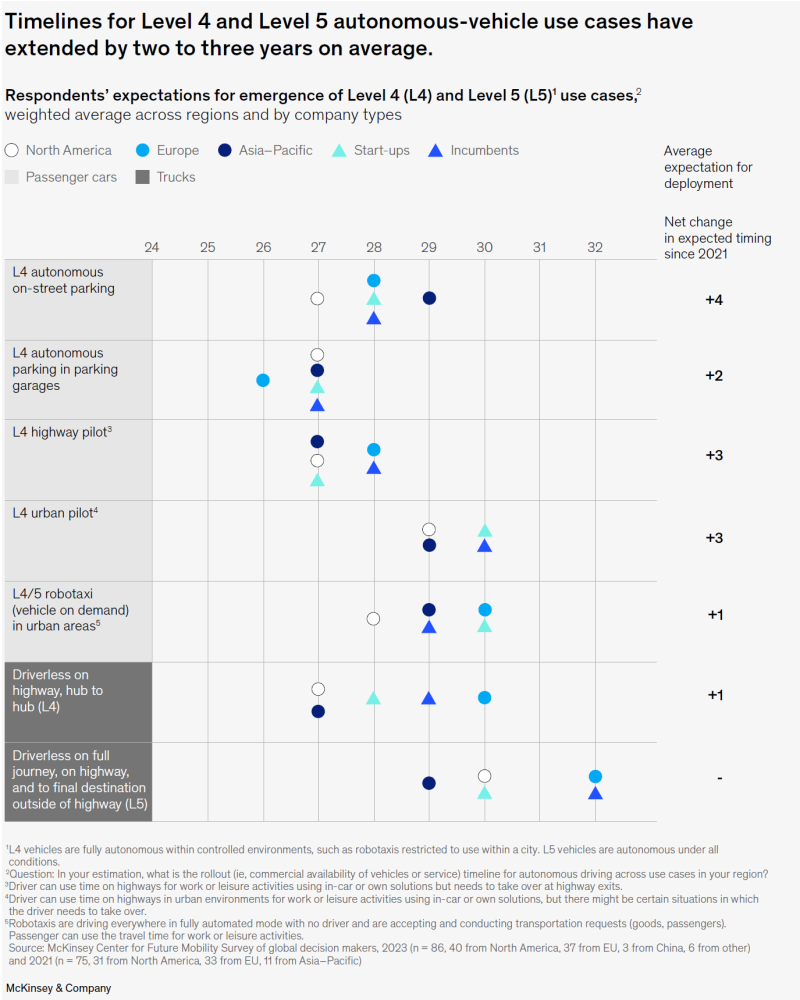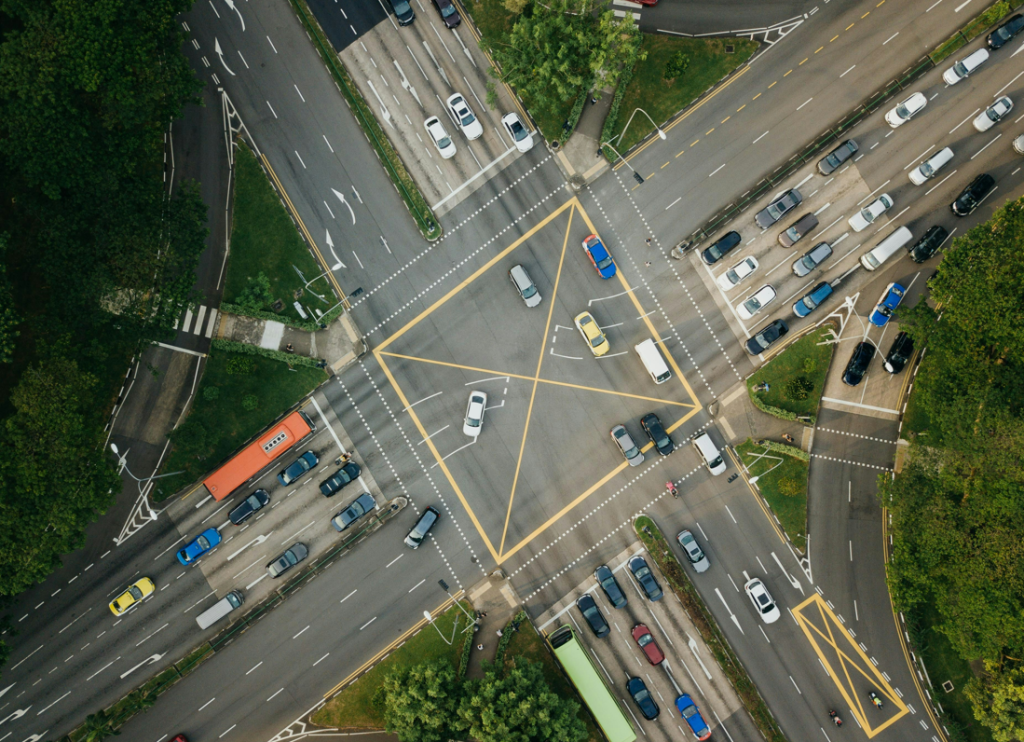Shifted timelines for autonomous vehicles
Today, McKinsey published an updated on their 2021 report on autonomous vehicles, with shifted timelines (as estimated by industry experts) for achieving L4/L5 self-driving by up to 4 years (in less than 3 years). Of course, the estimates that were before further in the future shifted less (optimistic as we are), and estimates that would be “now” shifted the most (see below picture), as we can clearly see that practical results are not where we want them to be.

Source: McKinsey, January 2024
A recent set-back, more from a societal point of view than from a technical point of view is the incident that caused the temporary shut-down of the GM Cruise program. A robot-vehicle driving over a person is not something today’s society is willing to accept, while human drivers kill well over 1 million (!) humans per year. The constant media battle over the safety of Tesla’s Autopilot versus human drivers is a perfect example.
When we look at the port sector, we can state that automation has substantially improved safety, to the extent that there is not a single (in 30 years of terminal automation) casualty due to a robot crane or a robot vehicle. Having said this, automation in a confined area, with the possibility to create strict rules, well managed by technology is way simpler than implementing automation in regular traffic.
My recent drive from towards the Austrian Alps – constantly using Autopilot – again showed me how difficult it will be to achieve level 4 automation in personal cars, let alone level 5. The frequency and variety of infrastructural complexities you face across Europe (yes on the German Autobahn) is so large, that developing sensors and interpreting software that reliably can deal with those is a challenge to say at the least. On top, the winterly weather conditions impact the capability of the sensors to provide the software with enough data. Cameras blinded by low standing sun, or by condensation, salt or snow clogging up on the radar sensor or the ultrasonic sensors, or the combination of heavy rain with dark conditions and not well maintained line markings are just a few examples of unsolved issues to achieve this level of automation.

An example of complex line markings
The answer to put more sensors (for example 13 cameras on a Q truck from Westwell) will not lead to salvation unless we come up with systems that work with less in case of malfunctioning of some of those. When we look at Autopilot (still the driver’s assist system with the most mileage in practice), it simply stops working when one of the sensors is not able to provide reliable input. So we need to come up with solutions that:
- Require a minimal amount of technology, to generate the lowest chance to fail.
- Provide redundancy in the technology, so that individual component failure will not lead to an overall system shutdown.
- Give maximum reliability in the technology (or minimum sensitivity) to the outdoor conditions (weather, dust, light).
Furthermore, the regulatory framework needs adaption to deal with robots entering traffic. In the confined terminal area this is well defined by European legislation (Machine Directive 2006/42), which obliges manufacturers and operators to come up with a layered assessment for the solutions leading to a safe operating environment for all people involved.
Finally, we will need to learn to accept that automation is not perfect, and that damage and eventually even casualties will result from autonomous vehicles. We need to realize that the frequency will be far less than that of human drivers, hence the overall situation will improve by a large extent.
Lastly, and I do not want to sound to negative, we need to be patient. The recent shifts in timeline of autonomous cars will not be the last. We now can purchase the first level 3 systems (BMW, Mercedes), which are allowed in certain markets. They still come with all kind of limitations of where they can be used, and under which circumstances. The thought of reading the paper while “Robot James” is driving all of us to work through morning traffic every day of the year, is still reserved to the happy few.
This article has been published earlier on LinkedIn by Portwise Managing Director Dr. Yvo Saanen.